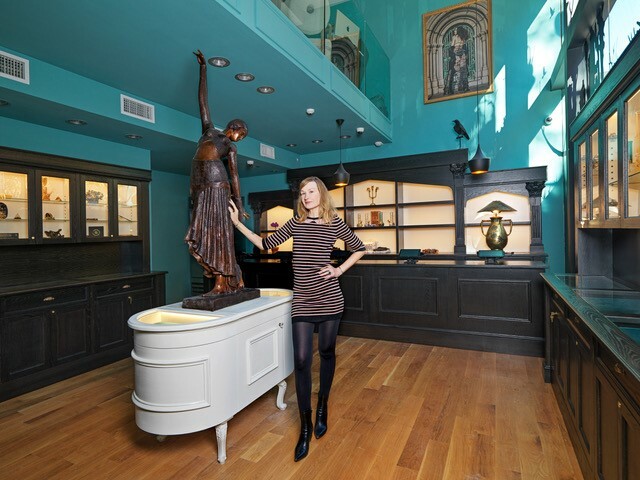Steps away from the site of the arrest that unknowingly allowed this all to happen, multifaceted artist Jennifer Tzar opens SoHo’s first legal recreational cannabis dispensary, Dagmar.
Following a multi-decade creative career as a photographer, celebrity stylist, and entrepreneur, with multiple cross-country moves, a child, a fire, a couple of bars, and an arrest in between, the elegant West Broadway storefront is a culmination of the artist’s greatest hopes, pains, talents, and inspirations— her chef-d’oeuvre (one in SoHo may say). It truly is. The way you could describe Jennifer is the same you could describe Dagmar, and cannabis— intelligent, intuitive, intriguing… chic… witchy.
Approaching Dagmar, the enchanting exterior looms over, hinting at the sorcery inside. What’s soon revealed is straight out of a magazine— which checks out, as Jennifer’s career as a photojournalist has seen her work in countless outlets, including Vogue, Discover, and Vanity Fair.
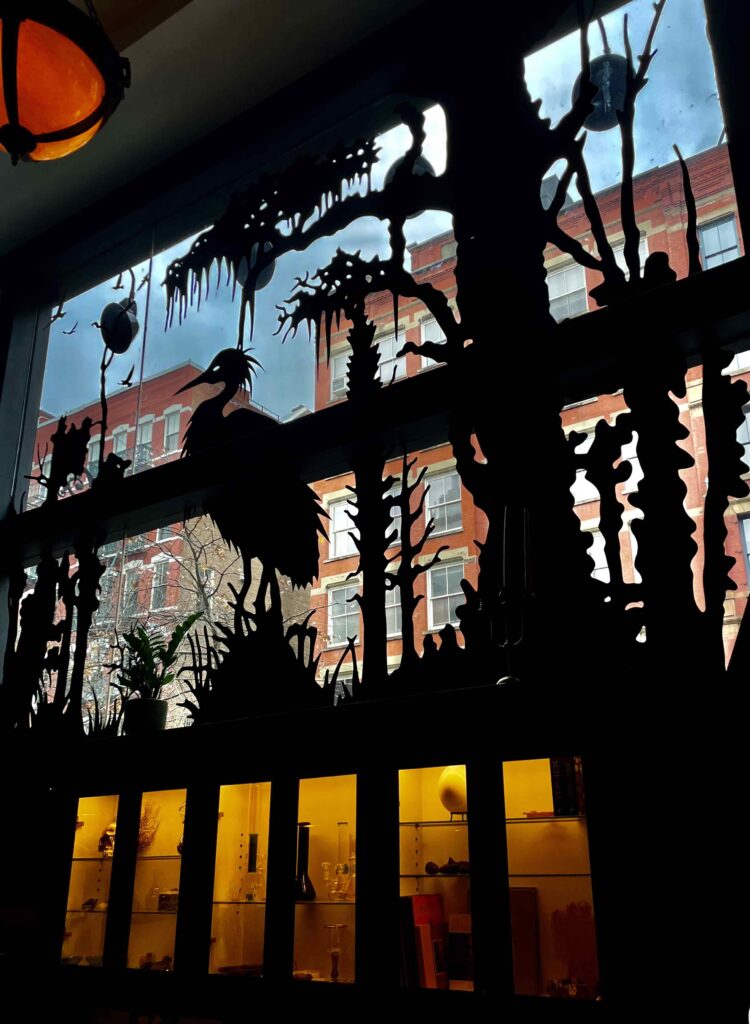
“Because I’m a photographer, I’ve worked on so many different aesthetics. I’m not necessarily married to one, but the aesthetic came from, first of all, SoHo. It’s the Iron District and just kind of that old Victorian Art Deco, Art Nouveau. It’s like the 1940s and older.
Then, combining that with the plant itself. The plant, first of all, is a female. It’s a horny female plant trying to get pollinated; oozing out sex hormones and crystals and whatever she can to attract. It’s witchy. All women are witches.
The plant itself is very magical. It has a lot of healing powers, all the way around. I know for me the plant puts me in deeper touch with myself.
It’s just kind of combining those things and combining my own deepest aesthetic, even though I can’t play with all of them.”
Jennifer Tzar, Founder of Dagmar
Bold teals and shimmering golds are accented with deep textures centered around an eloquent brass woman. The boutique-like space is tied together with a museum’s worth of antiques, from the furniture to the casing around the product displays and the books behind the counter. And what is modern is most likely from Jonathan Adler (down the block) or a high-end accessory, such as the Wild Bower bongs with 24 karat gold details, or the (not-for-sale) cashmere staff uniforms.
“With the displays, I went with like Cabinet of Curiosities— odd artifacts, antique ashtrays, there’s a skull down there, and just weird stuff that people want to look at. I know when I get high, I’m super visual. I just want to look at things, and think about things, and dig into stuff when I’m curious. So I added that element. It’s more intellectual and engaged. Not just like, ‘I’m going to get stoned and watch TV.’”
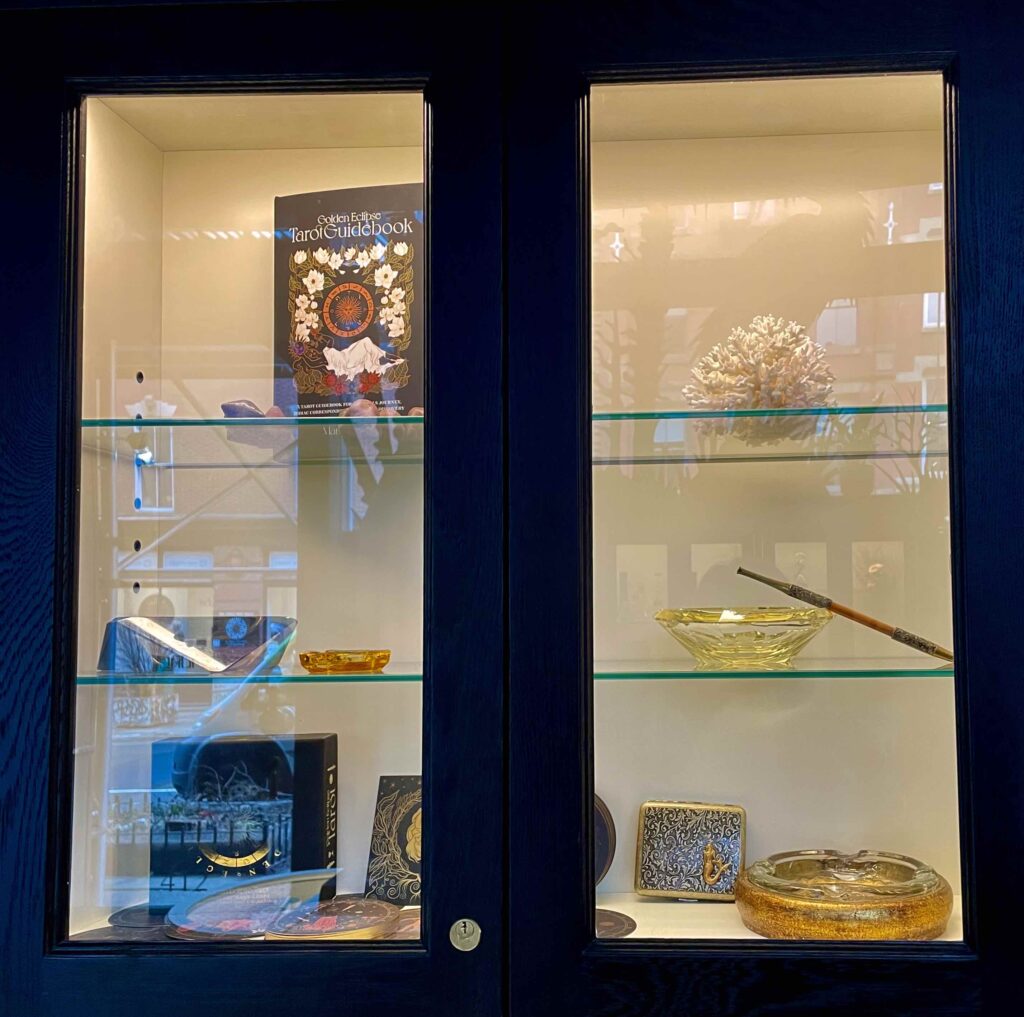
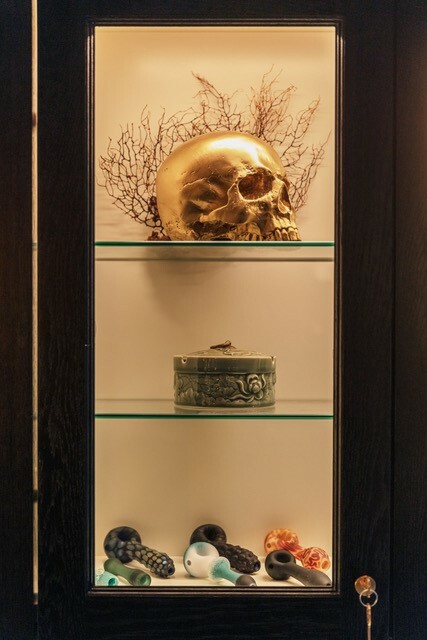
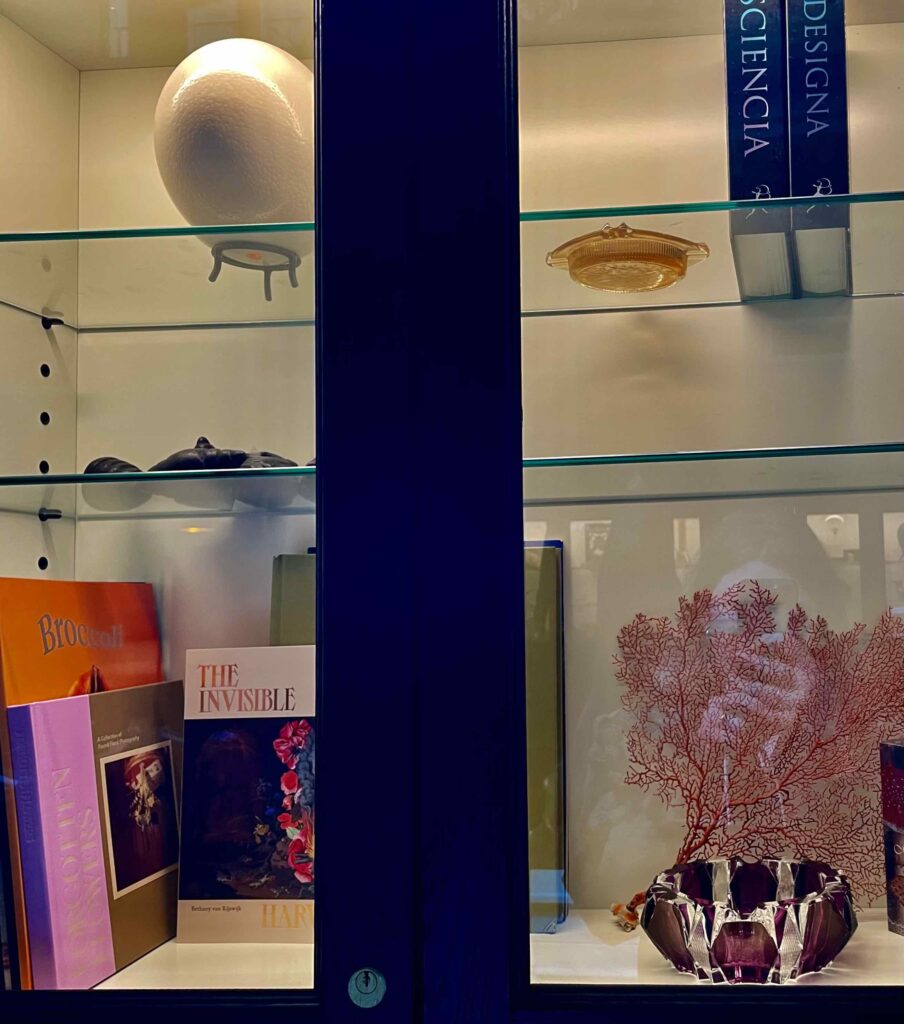
The Product of a Well-Seasoned Life
What I took away from Jennifer’s well-seasoned life, is that it is possible to live many different lives, experience many forms of yourself to the fullest, go through hell and back, multiple times, and still end up pulling together something as glorious as Dagmar— it’s what pushes one to such a grand contrivance. More than a dispensary, it’s an ultimate work of art; a collage of all the projects, experiences, inspirations, tastes, and troubles throughout her life.
Something like this cannot come together without the diverse layers of a life like Jennifer’s as well as the influence of living in a neighborhood like SoHo for two decades. From growing up on a self-sustaining Scandanavian family farm in Minnesota to a vibrant creative career spanning the world, Jennifer started as a model before working her way into wardrobe styling for celebrities and magazines, but ultimately found herself behind the camera as a photojournalist for the bulk of her career in fields spanning fashion, travel, science, politics, and music. She’s shot everything from album covers, music videos, and celebrities, to archeological digs and warzones.
Around 15 years ago, as her photo career became more fulfilled, she felt a growing urge to go off the grid. Along with her then-boyfriend, Jennifer bought 20 acres right on the coast in Mendocino, California. Right around that time, her daughter was struck with a persistent mysterious illness.
“I was flying out for all my jobs anyway so I figured I may as well be in nature. Then my daughter had some health problems. She was sick with some mystery illness. We couldn’t figure out what it was. And the photo industry was just starting to change. All of a sudden there are no magazines anymore and there are no record covers. I was making a lot of money doing record covers. So money got really tight.”
At the time, Jennifer had nothing to do with selling cannabis. But living in Mendocino, which is part of the highest cannabis-producing region in the country (aka the Emerald Triangle), getting involved was inevitable.
“My daughter was sick. I needed more money. My neighbors out in Mendocino kept saying, ‘If you know anybody in New York that wants to buy weed, let me know.’ One day I decided I would do that. They said I could make a lot of money doing very little. I get on a plane the next day and I’m back here in SoHo, a couple blocks from here at a party. This big photo agent came up to me and said, ‘Do you have a place in Mendocino? Are you growing?’ And I told her no but that my neighbors are and next thing you know I’m shipping weed out from California. Very quickly it moved into about 40 pounds a week, making like $40,000 a week in cash.”
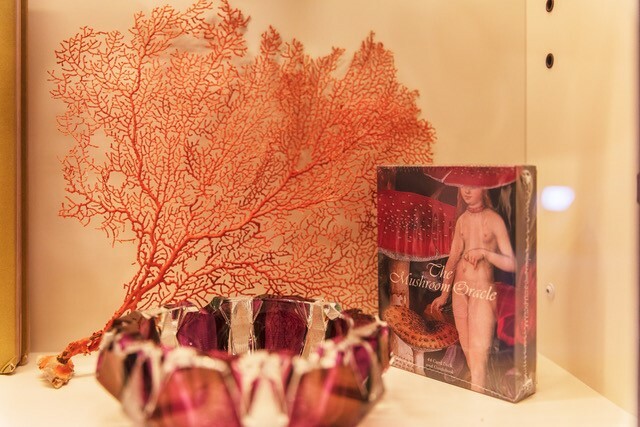

A few months into this endeavor, the building that contained Jennifer’s SoHo apartment caught on fire in the middle of the night. “I ran out in the middle of the night with a laundry bag with $200,000, barefoot, no ID, nothing. Just a laundry bag of $200,000 in cash. I left $24,000 there and they found $8,000,” along with ten of the eleven pounds of weed she had hidden in the back of her closet. She spent the night at her then-boyfriend’s house, returning to the scene the next day to an immediate arrest.
This started the chain of events that eventually led to Jennifer qualifying for a recreational cannabis license in New York. The arrest being the first piece of the puzzle and the fire leading to the next: running a profitable business for at least two years.
“I waited three years to get my apartment back and the landlord kept offering me more and more money not to come back. Three years later, he offered me $175,000.”
She took that money and moved to Hudson, NY to open ÖR Gallery & Tavern, a combined bar, café, and design studio. Five years later, she moved to Los Angeles and opened Oracle Tavern. While it became an artist hotspot, Jennifer felt “stuck in LA and hated it.”
A Cross-Country Move, An Arrest, A Fire, and a Couple of Bars Later
Shortly after that most recent cross-country move, recreational cannabis was legalized in New York.
“A friend texted me an article from the New York Times saying they were giving out the first 150 licenses to people with prior cannabis arrests who have run a profitable business for longer than two years, prioritizing women and people of color. I totally qualify. My first thought was, ‘I don’t want to have a cannabis dispensary.’ Nothing against cannabis, I just didn’t think it was my thing. She was like, ‘You should, you could make a lot of money.’ That’s what we thought back then. And who knows, maybe we will.
But I started to think about it. If I had a dispensary, what would I do? What would it look like? And where would I want it to be? Then I came up with this concept and I was all in.
I dropped everything. I became obsessed. I was flying back and forth from LA to New York every other week just constantly going to every cannabis event and board meeting. I did everything I could, and then I got licensed.”
Jennifer had played around with the idea of Dagmar with a brand strategist friend a few years prior but at the time it was just one of many passing ideas.
“I put it on the shelf because I can come up with a million ideas for anything all the time. When the license came up, I took it off the shelf, dusted it off, and used it. It just made sense, and to me, it’s the polar opposite of what everyone else is doing. It’s more SoHo.”
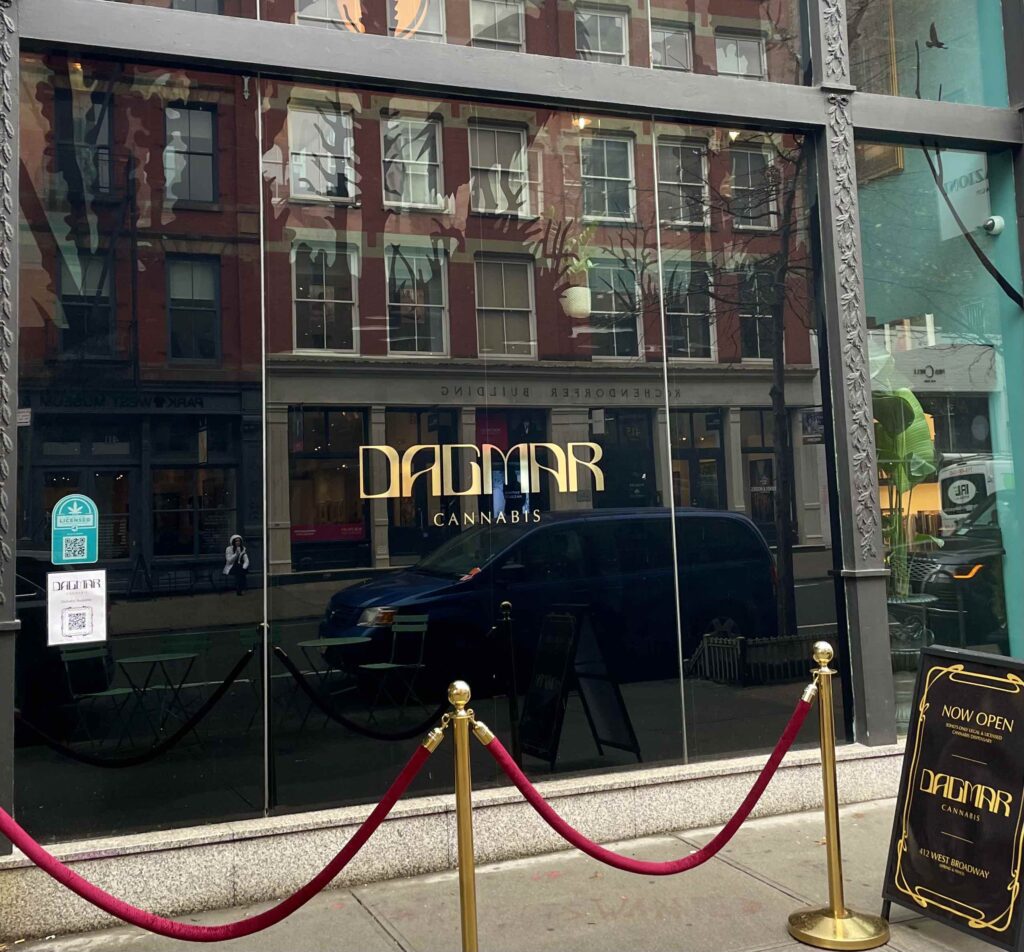
Cannabis for All in the Heart of SoHo
Nearly a decade into legal cannabis, you’d think we would have seen it all by now. But between the Cookies and Backpackboyz and all that has followed, it remains generally catered towards the same audiences and fitting of the same vibe. Where do women and queer people go to buy weed and feel welcomed? Where do the elderly go to buy weed and feel comfortable? Where do locals go to buy weed and feel at home? Where do creatives go to buy weed and feel understood? Now, they go to Dagmar.
“There are so many people that are totally overlooked in the cannabis market— creative professionals, women, older people. We get so many older people in here, like 70s.
There’s this woman named Judith who lives a couple of doors down. She’s 78. While I was building it out she started walking by all the time. She’s all excited. She said, ‘I smoke, I do gummies.’ And one day she walks by and asks if we are hiring. She’s like, ‘I don’t need a job. I’m retired from Broadway, but I would just love to support and work here.’ So we hired her.”
While the laws and compliance and banking can be such a headache, when the creative and community side comes naturally, the rest will fall into place with enough passion and determination.
“Everything here I’ve been working on with my friends. I did the interior design myself, but there are so many people– my people. I’ve lived here forever, so to me, it’s a village. There are people that live right around the corner that I’ve known for 35 years. We’re all in the village, we’re all involved.”
Jennifer Tzar

